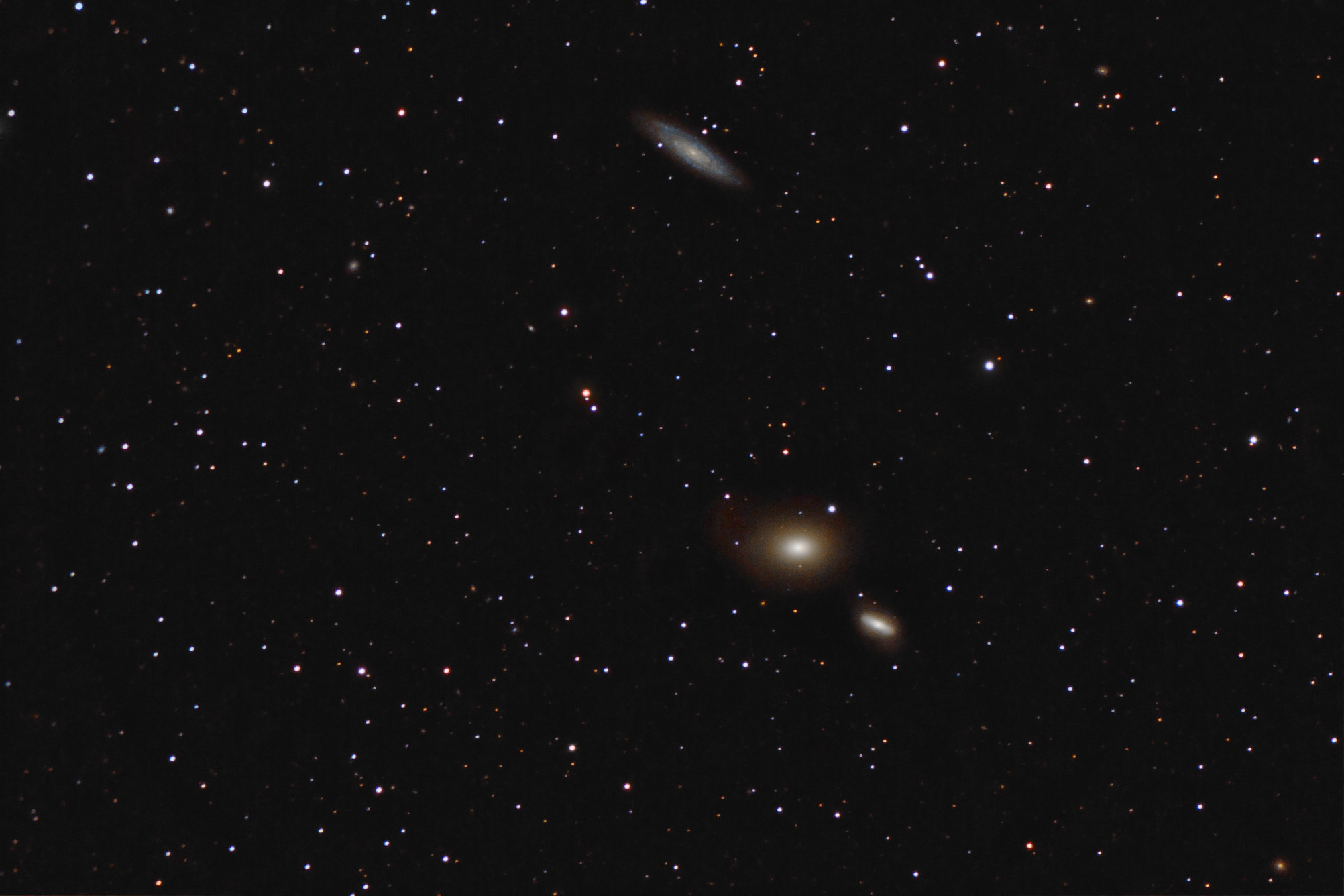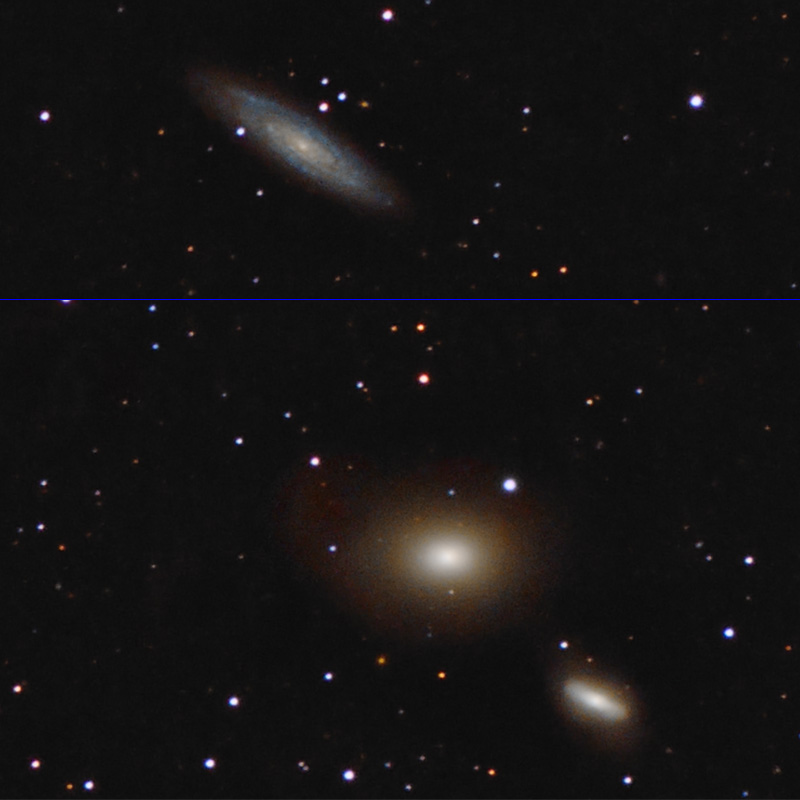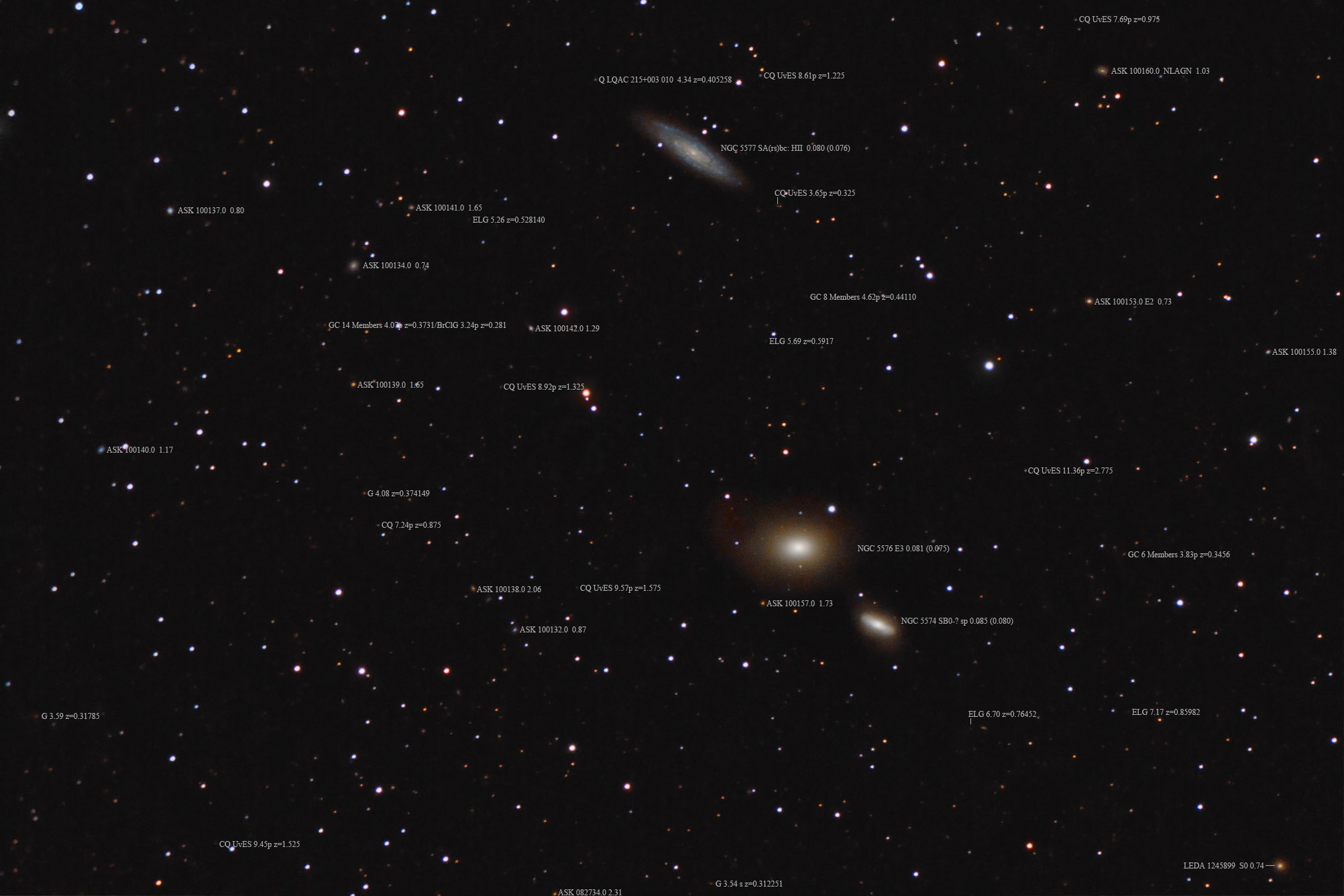| Description | Images |
Object name: NGC5576Designation(s): NGC5576, NGC5574, NGC5577, NGC 5576 anchors a small group of galaxies in northeastern Virgo about 80 million light-years distant by redshift. It is the largest and strangest of the three in my image. Classified as an E3 elliptical galaxy I didn't expect it to be as interesting as it turned out to be. The night I took this image was suddenly hit by northern lights which reduced my ability to go faint. I didn't realize this until two months later when I went to process the image and found the background as bright as if a near full moon was out. Red was hit the worst but all frames suffered. I'd not mention this but NGC 5576 isn't a normal E3 galaxy. It has plumes that greatly distort the expected normal slightly elliptical shape. The main one I picked up is to the east and a bit north. At first, I thought it a donut that vanished from my optical window but after enhancing both POSS and Sloan images the donut-like loop is real. There's another I mostly lost to aurora to the northwest and one that connects it to NGC 5574 to the southwest. That too is mostly lost on aurora fog. I found little on these plumes. The latest note at NED even says "NGC 5576 has a prototypical E4 morphology of average compactness." But another note from the same year says "NGC 5576: This boxy E displays a peculiar envelope with marked twist and important asymmetries. This envelope is also well above the r^1/4^ law." You'd think they were looking at two different galaxies. Related Designation(s):2MASS J14205596+0314167, 2MASS J14210367+0316154, 2MASS J14211309+0326089, 2MASX J14205594+0314167, 2MASX J14210369+0316157, 2MASX J14211311+0326087, CGCG 047-018, CGCG 047-020, CGCG 047-022, CGCG 1418.4+0328, CGCG 1418.5+0330, CGCG 1418.7+0340, CXOU J142103.7+031614, HDCE 0869 NED003, HDCE 0869 NED004, HDCE 0869 NED005, HIPASS J1421+03, HIR J1421+0326, HOLM 632A, HOLM 632B, IRAS 14187+0339, IRAS F14187+0339, ISOSS J14212+0325, KTG 55A, KTG 55B, KTG 55C, LDCE 1076 NED008, LDCE 1076 NED009, LDCE 1076 NED010, LGG 379:[G93] 004, LGG 379:[G93] 005, LGG 379:[G93] 006, MCG +01-37-006, MCG +01-37-007, MCG +01-37-009, NGC 5574, NGC 5576, NGC 5577, NGC5574, NGC5576, NGC5577, NSA 144923, NSA 164860, NSA 164865, PGC 051270, PGC 051275, PGC 051286, SDSS J142055.96+031416.7, SDSS J142055.96+031416.8, SSTSL2 J142055.95+031416.6, UGC 09181, UGC 09183, UGC 09187, USGC U616 NED01, USGC U616 NED02, USGC U616 NED03, UZC J142056.1+031418, UZC J142103.8+031616, UZC J142113.2+032610, UZC-CG 214 NED04, UZC-CG 214 NED05, UZC-CG 214 NED06, WVFS J1421+0330, WVFSCC J142110+032830, [BEC2010] HRS 312, [BEC2010] HRS 313, [GCM2012] 63, [M98j] 226 NED03, [M98j] 226 NED04, [M98j] 226 NED05, [SLK2004] 0991, | Permanent link: https://images.mantrapskies.com/catalog/NGC/NGC5576-NGC5574-NGC5577/NGC5576L4X10RGB2X10.JPG |


